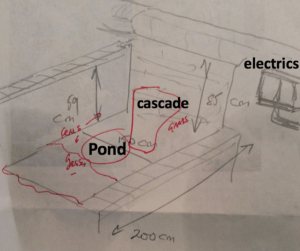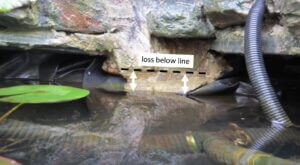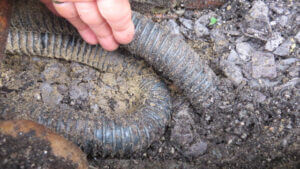The pond functions as organs of the body
The concept of diagnosis makes for an interesting read. How does your physician make a diagnosis and what is he or she looking for. The main organs of the body include the Lungs, heart and kidneys which and are interconnected with vessels carrying blood. In order to provide a deeper explanation, I decided to use the biology of my pond as an example. The ‘diagnosis’ seems to relate to the pond of life by associating the medium of water with that of blood and oxygen. In this example we can see how the body can be affected. Chronic diseases will shorten our life and so early diagnosis and prevention is the aim of any health care professional.
Diagnosis might not immediately jump off the page
How often does a clinician start off by making encouraging sounds about your problem only to be baffled? Tests come back seemingly unremarkable. Finally, surgery might be offered as a solution. This treatment may only arise after a prolonged period making life frustrating for the patient. The pond and its mechanics are used to illustrate how diagnosis can be reached by trial and error. The water level went down and seemed easy to correct but was not. The acute loss however went to chronic, implying as we find in humans that the problem kept returning.

Water is the heart of the pond and the elixir of life as blood is to the human body. The design before installation.
The wound
I designed a pond in 2018 – the outline is shown above. The pond was separate and required a pump, the heart of circulation, designed to keep the water oxygenated. The pond liner, the skin, kept the water in of course but then I managed to rip the skin and the water started to go down. Tear your skin and this is called a wound. After my repair, the pond water level seemed to descend again, only a year later and this time over three days. This meant the symptoms went from acute as in quickly, to slower or chronic. I checked the lining and the old repair as this must have been the cause of the water loss. At this point I realised water loss was a metaphor for the loss of blood pressure and if left without restoration of water, the pump would overheat. It then occurred to me what would the scenario be if I was a human? I decided to present the pond query to a fictional doctor.
Problem-solving is akin to a diagnosis
In the human body, blood leaking affects blood pressure and can result in anaemia, weakness arises due to low iron and oxygen in the blood.
“Well Doc, my pond is leaking again and I don’t know what to do?”
One of the downsides of water loss is that top-ups use valuable resources and ponds have a large capacity. The amount of loss is easily 22-25 litres (+ 5 imperial gallons). The body uses circulating blood of 4.5-6 litres which amounts to 1.5 gallons. Water in a pond carries oxygen as does blood for the body. The constant turnover of water is important for plants and wildlife. In fact the acidity and alkalinity or pH changes with rainwater and tap water. Ideally one does not want to keep changing pond water. As with blood, the pH has to be kept constant.

The loss of water fell. At 2-3 days the pipes were visible below the surface
What would the doctor say?
“Do you have any plants or wildlife in your pond?”
The answer is NO wildlife only plants. But the plants don’t like the constant changes imposed by the loss of water.
“Well you damaged the lining last year, the most likely problem is that the repair is now faulty.”Now, this seemed reasonable. And the treatment was to check the old repair and replace it with a larger patch. I felt like a vascular (blood vessel) surgeon and carried out a further repair with a patch x5 larger than the original size. The pond was filled up again. But more problems – the water still fell.

Back at the surgery. Same complaint!
“The pond emptied again Doc. What should I do now?”
The doctor needs to earn his money now. He cannot fob off the patient with; “Your patch must still be faulty!” Erm, he thinks. “Now what do we have in this pond?”
I say…
“A pump and a filter to keep the water clean which pass through reinforced hoses. The pump is like a kidney or the liver and functions to keep the water clean.”
The pump is the same as a heart, the doc will think. It uses (blood) pressure to push the blood around. If there was no pressure the waterfall would not visibly work so we don’t need to measure it as we would with people. In the human, if the pressure is too low he will fall over – faint or worse collapse and go into heart failure and die! There are three organs that could go wrong. The pump (heart), the filter (kidney) or the pipes (vessels). Well, you cannot remove a heart, a liver or kidneys without consequences but I removed my pump and filter and cleaned them up. I could tell the pond doc. both were clean and they had no blockages. I put them all back and the flow worked fine. But, the water level was going down still!
“So, what you are saying then is that you are still haemorrhaging water?” says the doc
“Well, I suppose if we lost pressure then yes. If the water level falls below the pump level, the waterfall will fail and this shows me all is working well unless it suffers a loss of pressure.”
I think we had by now done the pressure thing to death the pressure!
Surgery
The patch has been replaced and the filter and pump were working fine. I turn off the pump and allow the filter to work alone. The level stayed the same I inform my imaginary doc. This means the filter and skin (pond lining) are all working just fine. The skin is intact and not leaking.
“Well we’ve done minor surgery so far but now we are going to have to open it up,” suggests the doc. So here one would say the physician has done his work and a surgeon needs to be called in.

All those big arterial vessels had to be checked with extensive removal of earth and stones. Some pipes carried water, others electrics to the pumps. Electrics are akin to nerves.
I traced all the hoses and removed a bit of pipe and replaced it and checked all the joints. If this were a human problem we could use x-rays or maybe an ultrasound scan. I have to remove stones, earth and dug up my prized plants surrounding the outside of the pond. These were the living tissues if you like. I thought that I may have crimped a pipe and torn it. If this had been a human we might talk about a pipe that had ballooned as in an aneurysm. Or there could be a tear in the wall of a vital vessel causing the leak.
Transfusion
Fortunately, the pond has no valves as found in the human heart pump. I investigated all the joints. All were sound. I traced every pipe and each connection that had previously been buried. I made some of the connections simpler and ensured the large pipes I used were replaced with smaller pipes within the pond itself. It all looks neater after my surgical attempts. I was now very confident that all was well. I refilled the pond now having emptied it 3 times! All should have been well, but it wasn’t. Another appointment to see the doctor for a diagnosis? This is how it might have gone.
So, how’s it going. All fixed now you have had surgery?” he asked.
“No, after 2 days the pond is still losing water,” I say.
“Erm, still haemorrhaging then? The doc adds, well it doesn’t sound good, does it?
“You’re telling me!” I reply. “I am literally losing over a ton of water!”
He sees that I’m upset. This doctor knows nothing, so I go and find myself a specialist, someone who knows more about ponds. Enter the consultant – the go-to man…in this case a woman at the garden centre.
A final diagnosis at last?
I told the lady specialist my problem.
“Oh yes ponds lose a lot of water, especially over the summer. We have to top up our cascades several times a day.”
We went through some of the causes.
“So what you are saying is that the falling water evaporates with the resultant effect that water is lost?”
“Yes, exactly!”
Plants, fish and waterfalls all contribute to evaporation of volume. I realised my recent pond marigolds had blossomed madly. The water seems to go down as the leaves on the plant increase. When the pump starts up each day on a timer, the amount of water used in the first cycle consumes a significant volume in itself. One can watch the fall immediately. If the level of water is not topped up, the descent is notable.
Breathing
The lungs of the pond are in fact the waterfall. In a curious way as water circulates it brings renewed oxygen to the water having been pumped around the system. The surface area is like the lungs and has a large area that is thin. This explanation provides one reason for its effectiveness at oxygen gain. The pond has fewer problems in the winter months because the rainfall is higher.
Blood bank
Transfusion is the way to treat loss of blood. I installed a water butt (hidden behind a hedge) so that I could turn a tap and fill up my pond or leave the tap open when I went away for a few days. Never had a realised so much evaporation could take place with water.
Summer crept into Autumn and I noticed as the weather cooled the water dropped more than it should. I now had exploited every thought and mechanism and could not see what was going on. The pond never lost water unless the pump to the cascade went on. This clearly meant I had to go back to the main pipe which was on a 35mm (diameter) run under the earth, stones and gutter downpipes. I passed a long flexible tube down the pipe and decided to fit a 20mm tube inside. I felt now I was performing an ‘angioplasty’, passing a fine line up the thigh to the heart and expanding the tube. In fact, I had to cut away most of the sections of pipes and fitted new tube to the waterfall with fresh jubilee clips as the old ones had corroded.
Forty-eight hours later the water flow was strong and the water level did not budge. This was a much larger surgery and had to be executed ruthlessly. The diagnosis – a small tear in a buried pipe that could not be found without major dismantling the body of the structure.

Pond and cascade 2021 water marigolds in full bloom. Job done – Jeremy Fisher looking pleased with himself.

Epilogue
As the weather warmed up, with my water drip barrel in place, I only had to top up occasionally. After 2 years the pond was fixed; its water system now working without loss or haemorrhage. The pond of life has renewed my thoughts about body physiology and how marvellous the body is. It is a truism that the mechanical workings of a pond bear a close resemblance to some aspects of the human body. Living physics in motion is enthralling.
Diagnosis can become a trial and error and treatments are sometimes undertaken that fail. The use of early diagnosis, tests, and bold treatment is necessary. The moral of the tale is that sometimes when a cause should not be a problem, it turns out that we have been too quick to dismiss the solution. Ripping out all the pipes would have meant a rebuild but a bit of ingenuity and inserting a smaller pipe inside the larger pipe meant all could be saved. Even a specialist could not solve the problem in the end!
Thanks for reading ‘The concept of diagnosis’ by David R Tollafield
Published by Busypencilcase Reflective Communications 4th July 2021


Recent Comments